Jungheinrich EJD 222 Operating instructions
- Type
- Operating instructions

EJD 222 04.20
Operating instructions
51843676
04.20
en-GB
EJD 222

2

Declaration of Conformity
Manufacturer
Jungheinrich AG, 22039 Hamburg, Germany
Description
Industrial truck
Type Option Serial no. Year of
manufacture
EJD 222
On behalf of
Date
EU DECLARATION OF CONFORMITY
The undersigned hereby declare that the powered truck described in detail complies
with the current versions of European Directives 2006/42/EG (Machinery Directive)
and 2014/30/EU (Electromagnetic Compatibility - EMC). The manufacturer is
authorised to compile the technical documentation.
3
04.20 en-GB

4
04.20 en-GB

Foreword
Notes on the operating instructions
The present ORIGINAL OPERATING INSTRUCTIONS are designed to provide
sufficient instruction for the safe operation of the industrial truck. The information is
provided clearly and concisely. The chapters are arranged by letter and the pages
are numbered continuously.
The operator manual details different industrial truck models. When operating and
servicing the industrial truck, make sure that the particular section applies to your
truck model.
Our trucks are subject to ongoing development. We reserve the right to alter the
design, equipment and technical features of the system. No guarantee of particular
features of the truck should therefore be assumed from the present operating
instructions.
Safety notices and text mark-ups
Safety instructions and important explanations are indicated by the following
graphics:
DANGER!
Indicates an extremely hazardous situation. Failure to comply with this instruction will
result in severe irreparable injury and even death.
WARNING!
Indicates an extremely hazardous situation. Failure to comply with this instruction
may result in severe irreparable injury and even death.
CAUTION!
Indicates a hazardous situation. Failure to comply with this instruction may result in
slight to medium injury.
NOTICE
Indicates a material hazard. Failure to comply with this instruction may result in
material damage.
ZUsed before notices and explanations.
tIndicates standard equipment
oIndicates optional equipment
5
04.20 en-GB

Copyright
Copyright of these operating instructions remains with JUNGHEINRICH AG.
Jungheinrich Aktiengesellschaft
Friedrich-Ebert-Damm 129
22047 Hamburg - Germany
Tel: +49 (0) 40/6948-0
www.jungheinrich.com
6
04.20 en-GB

Contents
.
A Correct Use and Application 11
.
1 General 11
2 Correct application 11
3 Approved application conditions 12
3.1 Internal Operation Combined with Brief External or Cold Store
Operation (t) 13
3.2 Indoor Application in Fresh Food Areas (o) 13
3.3 Internal Operation in Cold Stores with Cold Store Equipment (o) 13
3.4 Permissible operating conditions for trucks with lithium-ion batteries 15
4 Proprietor responsibilities 16
5 Adding attachments and/or optional equipment 16
6 Removal of components 16
7 Wind loads 16
.
B Truck Description 17
.
1 Application 17
2 Travel direction definition 18
3 Assemblies and Functional Description 19
3.1 Assembly Overview 19
3.2 Components of the Access System 21
3.3 Overview of optional components 22
3.4 Protective and safety equipment 26
3.5 Functional Description 28
4 Technical Specifications 30
4.1 Performance data 30
4.2 Dimensions 31
4.3 Weights 33
4.4 Tyre type 33
4.5 EN norms 34
4.6 Specifications according to RED guideline (Radio Equipment
Directive) for radio units 35
5 Identification Points and Data Plates 36
5.1 Indication Points 36
5.2 Data plate 38
5.3 Truck capacity plate 39
5.4 Capacity Plate for Stacking, Transport and Double-Deck Operations 42
.
C Transport and Commissioning 43
.
1 Lifting by crane 43
2 Transport 45
3 Using the Truck for the First Time 47
.
D Battery - Servicing, Recharging, Replacement 49
.
1 Replaceable lead-acid and lithium-ion batteries 49
1.1 Notes on Battery Technologies 49
1.2 Safety instructions for handling lead-acid batteries 49
1.3 Battery types 51
7
04.20 en-GB

1.4 Exposing the battery 52
1.5 Charging the battery 54
1.6 Battery removal and installation 61
2 Integrated modular lithium-ion batteries 65
2.1 Notes on lithium-ion batteries 65
2.2 Safety regulations for handling lithium-ion batteries 65
2.3 Battery types 70
2.4 Battery data plate 71
2.5 Usability as a Function of the Battery Temperature 73
2.6 Exposing the battery 73
2.7 Charging the battery 74
.
E Operation 79
.
1 Safety Regulations for the Operation of Forklift Trucks 79
2 Displays and Controls 81
2.1 Charge Status Indicator 84
2.2 Battery discharge monitor 85
3 Preparing the Truck for Operation 86
3.1 Checks and Operations to Be Performed Before Starting Daily Work 86
3.2 Preparing the truck for operation 87
3.3 Checks and operations to be carried out when the truck is operational 88
3.4 Parking the truck securely 90
4 Industrial Truck Operation 92
4.1 Safety regulations for truck operation 92
4.2 Emergency Disconnect 94
4.3 Automatic braking 96
4.4 Travel 97
4.5 Changing direction during travel 99
4.6 Slow travel 100
4.7 Steering 101
4.8 Brakes 102
4.9 Load handler raise/lower 106
4.10 Lifting, transporting and depositing loads 111
4.11 Use as a Lift Work Table 120
5 Troubleshooting 122
5.1 Truck does not start 122
5.2 Load cannot be lifted 124
5.3 Lithium-ion battery fault 125
6 Operating the truck without its own drive system 126
7 Load handler emergency lowering 127
8 Optional equipment 129
8.1 Display unit (2 inch display) 129
8.2 Keyless Access System 134
8.3 General Information about the Use of Keyless Access Systems 135
8.4 Commissioning the Keypad and the Transponder Reader 135
8.5 Using the Display: 138
8.6 Using the Keypad 143
8.7 Operating the transponder reader 148
8.8 Access module (ISM Online) 152
.
F Industrial Truck Maintenance 153
.
1 Spare Parts 153
8
04.20 en-GB

2 Operational Safety and Environmental Protection 153
3 Maintenance Safety Regulations 155
3.1 Working on the electrical system 156
3.2 Consumables and used parts 156
3.3 Wheels 157
3.4 Hydraulic system 158
3.5 Lift Chains 159
4 Lubricants and Lubrication Schedule 160
4.1 Handling consumables safely 160
4.2 Lubrication Schedule 162
4.3 Consumables 163
5 Maintenance and repairs 164
5.1 Preparing the truck for maintenance and repairs 164
5.2 Lifting and jacking up the truck safely 164
5.3 Front panel disassembly and assembly 165
5.4 Drive panel disassembly and assembly 166
5.5 Disassembling/assembling the dashboard panel 167
5.6 Disassembling/assembling the safety devices 168
5.7 Cleaning 169
5.8 Check wheel attachment and wear 171
5.9 Checking the hydraulic oil level 173
5.10 Checking electrical fuses 174
5.11 Restoring the truck to service after maintenance and repairs 175
6 Decommissioning the Industrial Truck 176
6.1 Prior to decommissioning 176
6.2 Action to be taken during decommissioning 177
6.3 Restoring the truck to service after decommissioning 177
7 Safety tests to be performed at intervals and after unusual incidents 177
8 Final de-commissioning, disposal 177
.
G Maintenance, Inspection and Changing of Maintenance
Parts Requiring Replacement 179
.
1 Maintenance Contents EJD 120/222 180
1.1 Owner 180
1.2 Customer Service 184
9
04.20 en-GB

10
04.20 en-GB

A Correct Use and Application
1 General
The truck must be used, operated and serviced in accordance with the present
instructions. All other types of use are beyond its scope of application and may result
in damage to personnel, the industrial truck or property.
2 Correct application
CAUTION!
Danger due to excessive loads and incorrect load distribution
Overloading of the industrial truck and risk to operational stability.
uDo not exceed the maximum load that can be picked up or the maximum
permissible load distance – see page 39 and see page 42.
uPick up the load fully on the load handler.
uUse only approved attachments.
uIn double-deck operation, do not raise the load handler higher than 1800 mm 1.
The bottom load must always be heavier than the top load.
CAUTION!
Danger when travelling with a raised load
Travelling with a raised load on the load fork and no load on the support arms
impairs the driving characteristics of the truck and cause it to tip over.
uTravelling with a raised load on the load fork is permitted only when picking up and
putting down a second load in double-deck mode.
Permissible activities
– Lifting and lowering loads.
– Stacking and retrieving loads.
– Transporting lowered loads.
Prohibited activities
– Travelling with a raised load (>500 mm).
– In double-deck operation, raising the load handler higher than 1800 mm.
– Carrying and lifting passengers.
– Pushing or pulling loads.
1) In individual cases, a release can be requested from the manufacturer to increase the lift height.
11
04.20 en-GB

3 Approved application conditions
– Operation in industrial and commercial environments.
– Operation only on secure, level surfaces with sufficient capacity.
– Do not exceed the permissible surface and point load limits on the travel routes.
– Operation only on travel paths that are visible and approved by the operating
company.
– Negotiating inclines up to a maximum of 15 %.
– Do not travel across or at an angle on inclines. Travel with the load facing uphill.
WARNING!
Use under extreme conditions
Using the truck under extreme conditions can result in malfunctions and accidents.
uSpecial equipment and authorisation are required if the truck is to be constantly
used in extreme conditions, especially in dusty or corrosive atmospheres.
uThe truck cannot be used in areas at risk of explosion.
uIn adverse weather conditions (thunder, lightning) the industrial truck must not be
operated outside or in endangered areas.
Lithium-ion batteries
ZIf equipped with a lithium-ion battery (o), the permissible operating conditions of the
truck may change see page 15.
12
04.20 en-GB

3.1 Internal Operation Combined with Brief External or Cold Store
Operation (t)
In addition to the permissible application conditions in industrial and commercial
environments, the truck may also be used in outdoor environments, cold stores and
fresh food areas. Secure parking is only permissible indoors or in a cold store
environment.
– Permissible temperature range -10°C to +40°C.
– Secure parking is only permissible at +5°C to +40°C.
– Maximum air humidity 95% non-condensing.
– The application areas can be changed, but in general this should be minimised
due to thawing and possible corrosion.
– Do not charge the battery below +5°C.
3.2 Indoor Application in Fresh Food Areas (o)
The truck is used in industrial and commercial environments and also in fresh food
areas. The truck must be parked and secured only in indoor areas.
– Permissible temperature range -10°C to +7°C.
– Secure parking is only permissible at +5°C to +40°C.
– Maximum air humidity 95% non-condensing.
– Do not charge the battery below +5°C.
NOTICE
Trucks for use in fresh food areas
uTrucks intended for use in fresh food areas are equipped with hydraulic oil suitable
for cold-store applications and a protective grille instead of a protective screen
panel on the mast.
uIf a truck with cold-store oil is used outside the fresh food area, the lowering
speeds may increase.
3.3 Internal Operation in Cold Stores with Cold Store Equipment (o)
In addition to the permissible operating conditions in industrial and commercial
environments, the truck remains primarily in cold stores. The truck should only leave
the cold store briefly to hand over a load.
– Permissible temperature range -28°C to +25°C.
– Maximum air humidity 95% non-condensing.
– Thawing is permissible only if the truck can be subsequently dried thoroughly.
– In cold store areas below -10°C the truck must be operated permanently and
should not be parked securely for more than 15 minutes.
– Do not charge the battery below +5°C.
NOTICE
Cold store trucks
uTrucks designed for use in cold stores have a cold store hydraulic oil and a
protective frame instead of a mast guard on the mast.
uIf a truck with cold store oil is used outside the cold store, the lowering speeds
may increase.
13
04.20 en-GB

NOTICE
Battery damage
As the temperature becomes increasingly cold, the battery can be damaged if the
battery charge is low.
uIf the battery charge is low do not use the truck in areas of -28°C to -5°C.
uIf the battery charge is low it is preferable not to use the truck in areas of -5°C to
+5°C.
uCharge the battery, see page 54.
14
04.20 en-GB

3.4 Permissible operating conditions for trucks with lithium-ion
batteries
Replaceable lithium-ion batteries
ZIf equipped with a lithium-ion battery (o), the permissible operating conditions
change; see the "Lithium-ion battery 24V - 110 Ah / 260 Ah. operating instructions"
Integrated modular lithium-ion batteries
The battery is not authorised for use in cold stores with temperatures below -10°C.
– Permissible temperature range -10°C to +40°C.
– Secure parking (longer than 5 minutes) is only permissible at +5°C to +40°C.
– Maximum air humidity 95% non-condensing.
– The application areas can be changed, but in general this should be minimised
due to thawing and possible corrosion.
– Thawing is permissible only if the truck can be subsequently dried thoroughly.
– Do not charge the battery below +5°C.
15
04.20 en-GB

4 Proprietor responsibilities
For the purposes of the present operating instructions the “operating company” is
defined as any natural or legal person who either uses the industrial truck himself, or
on whose behalf it is used. In special cases (e.g. leasing or renting) the proprietor is
considered the person who, in accordance with existing contractual agreements
between the owner and user of the industrial truck, is charged with operational
duties.
The proprietor must ensure that the industrial truck is used only for the purpose it is
intended for and that danger to life and limb of the user and third parties are
excluded. Furthermore, accident prevention regulations, safety regulations and
operating, servicing and repair guidelines must be followed. The operating company
must ensure that all users have read and understood these operating instructions.
NOTICE
Failure to comply with the operating instructions invalidates the warranty. The same
applies if improper work is carried out on the truck by the customer or third parties
without the permission of the manufacturer.
5 Adding attachments and/or optional equipment
The mounting or installation of additional equipment which affects or enhances the
performance of the industrial truck requires the written permission of the
manufacturer. Local authority approval may also need to be obtained.
Local authority approval however does not constitute the manufacturer’s approval.
6 Removal of components
It is forbidden to modify or remove truck components, particularly protective and
safety equipment.
ZIf in doubt, contact the manufacturer's customer service department.
7 Wind loads
Wind forces can affect the stability of a truck when lifting, lowering and transporting
loads with large surface areas.
Light loads must be especially secured when they are subjected to wind forces. This
will prevent the load from sliding or falling.
Stop the truck in both cases.
16
04.20 en-GB

B Truck Description
1 Application
The EJD 222 is a 5-wheel, electric pallet truck with a steered drive wheel and
coupling unit.
It is designed to lift, stack and transport goods on level surfaces. In double-deck
operation, two pallets can be stacked on top of each other. Open bottom pallets or
roll cages can be lifted.
17
04.20 en-GB

2 Travel direction definition
The following determinations have been made for travel direction specification:
1
32
4
Item Travel Direction
1 Left
2 Load direction
3 Drive direction
4 Right
18
04.20 en-GB

3 Assemblies and Functional Description
3.1 Assembly Overview
75
9
8
11
13
15
16
24
23
12
21
25
10
10
14
17 18 19
6
19
04.20 en-GB

2
5
8
0
1
4
7
3
6
9
C
15 18 19 17
I D E N T ?
Item Description
5tProtective screen panel
6oProtective grille
7tMast
8tCollision safety switch
9tBattery panel
10 tTiller head
11 tLoad handler
12 oMains plug for the on-board charger
13 tTiller
14 tCharge status indicator
15 tControl and display unit (2-inch display)
16 tKey switch
17 oISM Online access module
18 oKeypad
19 oTransponder reader
21 tEmergency disconnect switch
23 tDrive wheel
24 tSupport wheel
25 tBattery compartment
20
04.20 en-GB
Page is loading ...
Page is loading ...
Page is loading ...
Page is loading ...
Page is loading ...
Page is loading ...
Page is loading ...
Page is loading ...
Page is loading ...
Page is loading ...
Page is loading ...
Page is loading ...
Page is loading ...
Page is loading ...
Page is loading ...
Page is loading ...
Page is loading ...
Page is loading ...
Page is loading ...
Page is loading ...
Page is loading ...
Page is loading ...
Page is loading ...
Page is loading ...
Page is loading ...
Page is loading ...
Page is loading ...
Page is loading ...
Page is loading ...
Page is loading ...
Page is loading ...
Page is loading ...
Page is loading ...
Page is loading ...
Page is loading ...
Page is loading ...
Page is loading ...
Page is loading ...
Page is loading ...
Page is loading ...
Page is loading ...
Page is loading ...
Page is loading ...
Page is loading ...
Page is loading ...
Page is loading ...
Page is loading ...
Page is loading ...
Page is loading ...
Page is loading ...
Page is loading ...
Page is loading ...
Page is loading ...
Page is loading ...
Page is loading ...
Page is loading ...
Page is loading ...
Page is loading ...
Page is loading ...
Page is loading ...
Page is loading ...
Page is loading ...
Page is loading ...
Page is loading ...
Page is loading ...
Page is loading ...
Page is loading ...
Page is loading ...
Page is loading ...
Page is loading ...
Page is loading ...
Page is loading ...
Page is loading ...
Page is loading ...
Page is loading ...
Page is loading ...
Page is loading ...
Page is loading ...
Page is loading ...
Page is loading ...
Page is loading ...
Page is loading ...
Page is loading ...
Page is loading ...
Page is loading ...
Page is loading ...
Page is loading ...
Page is loading ...
Page is loading ...
Page is loading ...
Page is loading ...
Page is loading ...
Page is loading ...
Page is loading ...
Page is loading ...
Page is loading ...
Page is loading ...
Page is loading ...
Page is loading ...
Page is loading ...
Page is loading ...
Page is loading ...
Page is loading ...
Page is loading ...
Page is loading ...
Page is loading ...
Page is loading ...
Page is loading ...
Page is loading ...
Page is loading ...
Page is loading ...
Page is loading ...
Page is loading ...
Page is loading ...
Page is loading ...
Page is loading ...
Page is loading ...
Page is loading ...
Page is loading ...
Page is loading ...
Page is loading ...
Page is loading ...
Page is loading ...
Page is loading ...
Page is loading ...
Page is loading ...
Page is loading ...
Page is loading ...
Page is loading ...
Page is loading ...
Page is loading ...
Page is loading ...
Page is loading ...
Page is loading ...
Page is loading ...
Page is loading ...
Page is loading ...
Page is loading ...
Page is loading ...
Page is loading ...
Page is loading ...
Page is loading ...
Page is loading ...
Page is loading ...
Page is loading ...
Page is loading ...
Page is loading ...
Page is loading ...
Page is loading ...
Page is loading ...
Page is loading ...
Page is loading ...
Page is loading ...
Page is loading ...
Page is loading ...
Page is loading ...
Page is loading ...
Page is loading ...
Page is loading ...
Page is loading ...
Page is loading ...
Page is loading ...
Page is loading ...
Page is loading ...
Page is loading ...
Page is loading ...
Page is loading ...
Page is loading ...
Page is loading ...
Page is loading ...
-
 1
1
-
 2
2
-
 3
3
-
 4
4
-
 5
5
-
 6
6
-
 7
7
-
 8
8
-
 9
9
-
 10
10
-
 11
11
-
 12
12
-
 13
13
-
 14
14
-
 15
15
-
 16
16
-
 17
17
-
 18
18
-
 19
19
-
 20
20
-
 21
21
-
 22
22
-
 23
23
-
 24
24
-
 25
25
-
 26
26
-
 27
27
-
 28
28
-
 29
29
-
 30
30
-
 31
31
-
 32
32
-
 33
33
-
 34
34
-
 35
35
-
 36
36
-
 37
37
-
 38
38
-
 39
39
-
 40
40
-
 41
41
-
 42
42
-
 43
43
-
 44
44
-
 45
45
-
 46
46
-
 47
47
-
 48
48
-
 49
49
-
 50
50
-
 51
51
-
 52
52
-
 53
53
-
 54
54
-
 55
55
-
 56
56
-
 57
57
-
 58
58
-
 59
59
-
 60
60
-
 61
61
-
 62
62
-
 63
63
-
 64
64
-
 65
65
-
 66
66
-
 67
67
-
 68
68
-
 69
69
-
 70
70
-
 71
71
-
 72
72
-
 73
73
-
 74
74
-
 75
75
-
 76
76
-
 77
77
-
 78
78
-
 79
79
-
 80
80
-
 81
81
-
 82
82
-
 83
83
-
 84
84
-
 85
85
-
 86
86
-
 87
87
-
 88
88
-
 89
89
-
 90
90
-
 91
91
-
 92
92
-
 93
93
-
 94
94
-
 95
95
-
 96
96
-
 97
97
-
 98
98
-
 99
99
-
 100
100
-
 101
101
-
 102
102
-
 103
103
-
 104
104
-
 105
105
-
 106
106
-
 107
107
-
 108
108
-
 109
109
-
 110
110
-
 111
111
-
 112
112
-
 113
113
-
 114
114
-
 115
115
-
 116
116
-
 117
117
-
 118
118
-
 119
119
-
 120
120
-
 121
121
-
 122
122
-
 123
123
-
 124
124
-
 125
125
-
 126
126
-
 127
127
-
 128
128
-
 129
129
-
 130
130
-
 131
131
-
 132
132
-
 133
133
-
 134
134
-
 135
135
-
 136
136
-
 137
137
-
 138
138
-
 139
139
-
 140
140
-
 141
141
-
 142
142
-
 143
143
-
 144
144
-
 145
145
-
 146
146
-
 147
147
-
 148
148
-
 149
149
-
 150
150
-
 151
151
-
 152
152
-
 153
153
-
 154
154
-
 155
155
-
 156
156
-
 157
157
-
 158
158
-
 159
159
-
 160
160
-
 161
161
-
 162
162
-
 163
163
-
 164
164
-
 165
165
-
 166
166
-
 167
167
-
 168
168
-
 169
169
-
 170
170
-
 171
171
-
 172
172
-
 173
173
-
 174
174
-
 175
175
-
 176
176
-
 177
177
-
 178
178
-
 179
179
-
 180
180
-
 181
181
-
 182
182
-
 183
183
-
 184
184
-
 185
185
-
 186
186
-
 187
187
-
 188
188
-
 189
189
-
 190
190
Jungheinrich EJD 222 Operating instructions
- Type
- Operating instructions
Ask a question and I''ll find the answer in the document
Finding information in a document is now easier with AI
Related papers
-
Jungheinrich EJE 230 G Operating instructions
-
Jungheinrich SLH 200 Operating instructions
-
Jungheinrich SLT 100 Operating instructions
-
Jungheinrich EJC M10 (E) Operating instructions
-
Jungheinrich ERE 20 Operating instructions
-
Jungheinrich ERE 120 Operating Instructions Manual
-
Jungheinrich EFG 216kn Operating instructions
-
Jungheinrich ETM 214 Operating instructions
-
Jungheinrich EJE i20 Operating instructions
-
Jungheinrich ETV-C16 Operating instructions
Other documents
-
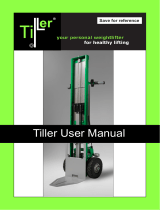 Tiller Automatic Hand Truck User manual
Tiller Automatic Hand Truck User manual
-
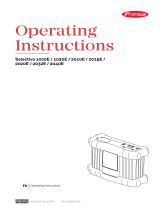 Fronius 1020E Selectiva BATTERY CHARGERS Operating instructions
Fronius 1020E Selectiva BATTERY CHARGERS Operating instructions
-
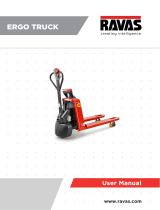 Ravas Ergo Truck User manual
Ravas Ergo Truck User manual
-
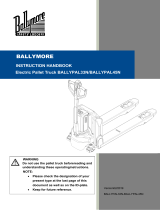 Ballymore BALLYPAL 45N-27 Owner's manual
Ballymore BALLYPAL 45N-27 Owner's manual
-
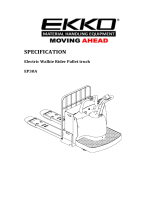 EKKO EP30A User manual
EKKO EP30A User manual
-
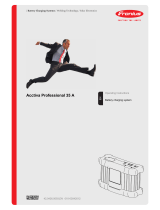 Fronius Acctiva Professional 35 A User manual
Fronius Acctiva Professional 35 A User manual
-
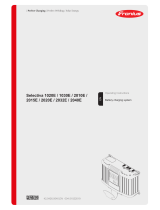 Fronius Selectiva 2040E Operating Instructions Manual
Fronius Selectiva 2040E Operating Instructions Manual
-
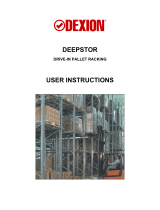 Dexion DEEPSTOR DEIVE-IN PALLET RACKING User manual
Dexion DEEPSTOR DEIVE-IN PALLET RACKING User manual
-
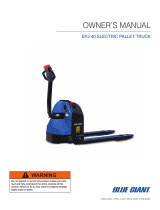 Blue Giant EPJ-40 Owner's manual
Blue Giant EPJ-40 Owner's manual
-
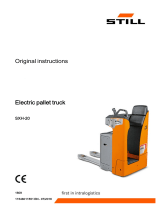 Still SXH-20 Original Instructions Manual
Still SXH-20 Original Instructions Manual







































































































































































































